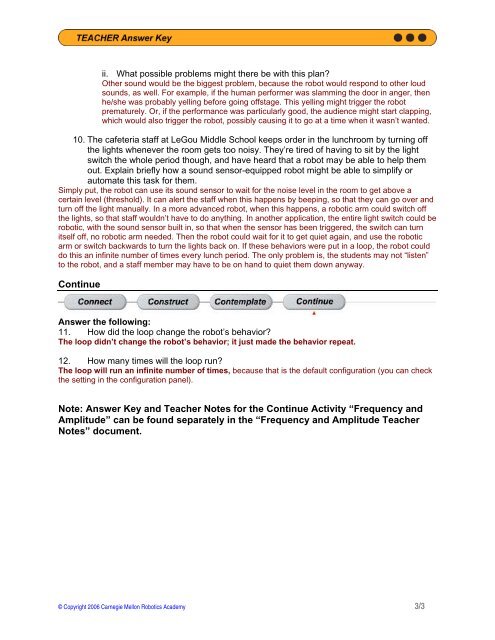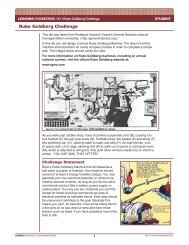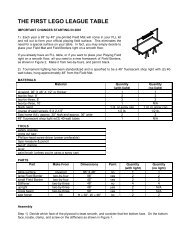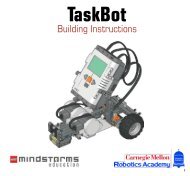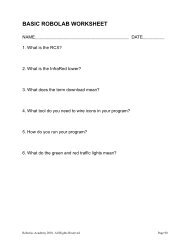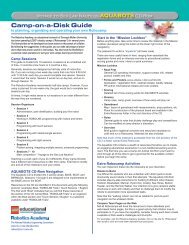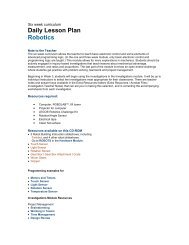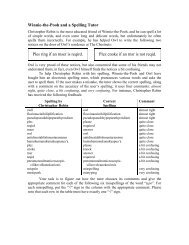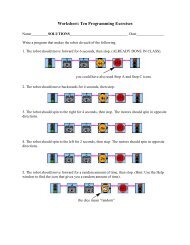Teacher Answer Key: Clap On, Clap Off - Robotics Academy
Teacher Answer Key: Clap On, Clap Off - Robotics Academy
Teacher Answer Key: Clap On, Clap Off - Robotics Academy
Create successful ePaper yourself
Turn your PDF publications into a flip-book with our unique Google optimized e-Paper software.
ii. What possible problems might there be with this plan?<br />
Other sound would be the biggest problem, because the robot would respond to other loud<br />
sounds, as well. For example, if the human performer was slamming the door in anger, then<br />
he/she was probably yelling before going offstage. This yelling might trigger the robot<br />
prematurely. Or, if the performance was particularly good, the audience might start clapping,<br />
which would also trigger the robot, possibly causing it to go at a time when it wasn’t wanted.<br />
10. The cafeteria staff at LeGou Middle School keeps order in the lunchroom by turning off<br />
the lights whenever the room gets too noisy. They’re tired of having to sit by the light<br />
switch the whole period though, and have heard that a robot may be able to help them<br />
out. Explain briefly how a sound sensor-equipped robot might be able to simplify or<br />
automate this task for them.<br />
Simply put, the robot can use its sound sensor to wait for the noise level in the room to get above a<br />
certain level (threshold). It can alert the staff when this happens by beeping, so that they can go over and<br />
turn off the light manually. In a more advanced robot, when this happens, a robotic arm could switch off<br />
the lights, so that staff wouldn’t have to do anything. In another application, the entire light switch could be<br />
robotic, with the sound sensor built in, so that when the sensor has been triggered, the switch can turn<br />
itself off, no robotic arm needed. Then the robot could wait for it to get quiet again, and use the robotic<br />
arm or switch backwards to turn the lights back on. If these behaviors were put in a loop, the robot could<br />
do this an infinite number of times every lunch period. The only problem is, the students may not “listen”<br />
to the robot, and a staff member may have to be on hand to quiet them down anyway.<br />
Continue<br />
<strong>Answer</strong> the following:<br />
11. How did the loop change the robot’s behavior?<br />
The loop didn’t change the robot’s behavior; it just made the behavior repeat.<br />
12. How many times will the loop run?<br />
The loop will run an infinite number of times, because that is the default configuration (you can check<br />
the setting in the configuration panel).<br />
Note: <strong>Answer</strong> <strong>Key</strong> and <strong>Teacher</strong> Notes for the Continue Activity “Frequency and<br />
Amplitude” can be found separately in the “Frequency and Amplitude <strong>Teacher</strong><br />
Notes” document.<br />
© Copyright 2006 Carnegie Mellon <strong>Robotics</strong> <strong>Academy</strong> 3/3


